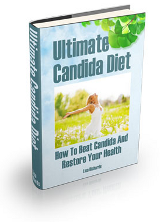Excessive sugar in the diet promotes yeast infections. These infections go by many names: Candidiasis, Candida Albicans, Candida, yeast over growth, and Thrush. It is not uncommon for Candidiasis sufferers to see multiple doctors for their symptoms without receiving diagnosis, treatment, or relief.
Candida Overgrowth Syndrome, or Candidiasis, is often tricky to diagnose. This is partly due to the wide range of symptoms it can cause. These include fatigue, bloated belly, chronically weak or painful muscles and joints, sinus issues, thrush, diarrhea or constipation, vaginitis and recurring yeast infections, athlete’s foot, low libido, and fuzzy thinking.
There are many reasons why doctors are reluctant to diagnosis Candidiasis. Some may view it as a “fad” rather than a genuine health problem; others may mistake its diverse symptoms for other diseases.
Even more, the Candida fungus is naturally present in the body so a slight imbalance is difficult to identify accurately. Because there are no conclusive tests for Candidiasis, doctors tend to ignore patient concerns about this well-known but elusive irritation.
Luckily, learning about the causes of Candida overgrowth can help sufferers take action to overcome their many disruptive symptoms – with or without a doctor’s diagnosis.
What Is Candidiasis?
Candida Albicans is a yeast, or fungus, that grows naturally in the human body. When we are healthy and balanced, our immune systems and the beneficial bacteria our bodies generate work to keep Candida under control. The only time Candida causes us problems is when something causes our bodies to slip out of balance. When our pH varies abnormally or we do not produce enough “good” bacteria, Candida grows unchecked. This is Candida Overgrowth Syndrome.
These imbalances are commonly caused by lengthy use of broad-spectrum antibiotics. In addition to ridding the body of infection, these antibiotics destroy the helpful bacteria that keep Candida Albicans from overproducing. For women, birth control pills can disrupt balanced pH and allow Candida to grow uncontrolled. In addition, long-term, unbalanced eating habits also promote the growth of the yeast in our bodies.
Sugar: The Relationship between Candidasis and Diet
Candida Albicans thrives on sugar. That includes not only white sugar, but also all foods and food products that contain sugar, simple carbohydrates, and even alcohol. (A note about alcohol: it is a highly refined form of sugar)
Simply put, sugar feeds yeast.
Once you start paying attention to food labeling, you will be astonished at the number of processed foods that include sugar in their ingredients. Just as an example, many spicy snack chips contain sugar. Condiments, salad dressings and ketchup have a surprisingly high in sugar content. Popular yogurts today, once considered a good way to combat yeast infections, is typically high in sugar and is more of a desert treat than a home remedy. Any food containing sucrose, corn syrup, or fructose contains sugar. Even milk products contain sugar because of lactose.
What You Can Do About Candidasis
To alleviate symptoms of Candida overgrowth, eliminate all forms of sugar from your diet. This can be very difficult – especially at first. Sugar is wildly addictive, and when we stop eating it, our cravings spiral out of control. One cookie or one helping of pasta can easily knock you off the wagon and cause you to resume your old bad habits.
At the same time, try to make your body fight yeast overgrowth by adding anti-fungal foods. Examples of anti-fungal foods include fresh garlic, clove and oregano. Probiotics are also helpful, such as sauerkraut, apple cider vinegar, and pickles.
Most Americans consume a tremendous amount of over-processed, highly sugared foods. Even those of us who do not suffer from Candidiasis will benefit from these dietary adjustments and live a better, healthier life.
A Huge List of Low Sugar Foods
Selecting foods low in sugar can be tricky. This is because of a well-known trend in the food industry today. The rule seems to be that when sales lag, manufactures resort to a proven trick: add more sugar, fat and salt, and sales always increase.
To make matters worse, reading labels on packages has become an art form better reserved for scientists. The names of ingredients are intentionally designed to mislead consumers and hide sugar content, salt and fat.
Lisa Richards is a medical research by profession and a successful author. She wrote the leading book about the relationship between Candidasis and sugar. As part of her home treatment plan, she includes a large list of foods that are low in sugar, and those that are not. She makes shopping easy.
Today, the safest way to eliminate sugar is to rely on a medical researcher. This way, you know with confidence you are not being tricked again. You will know with certainty that you are relying upon the best advice today.
